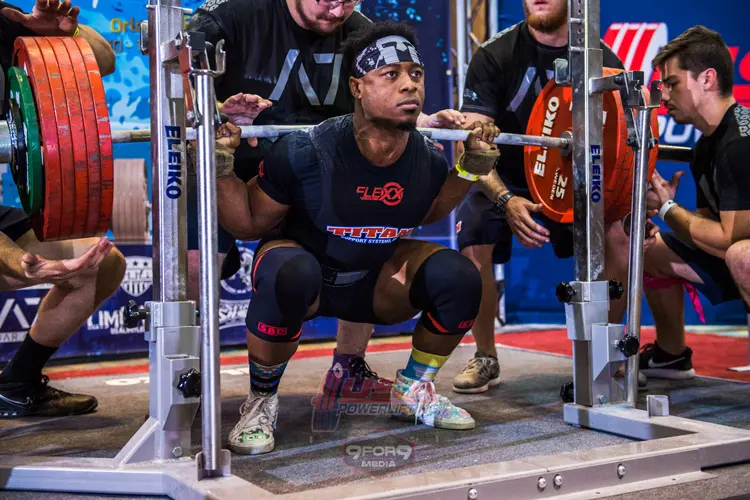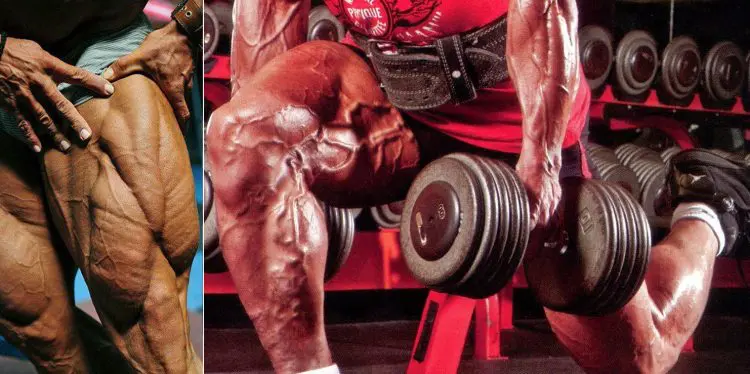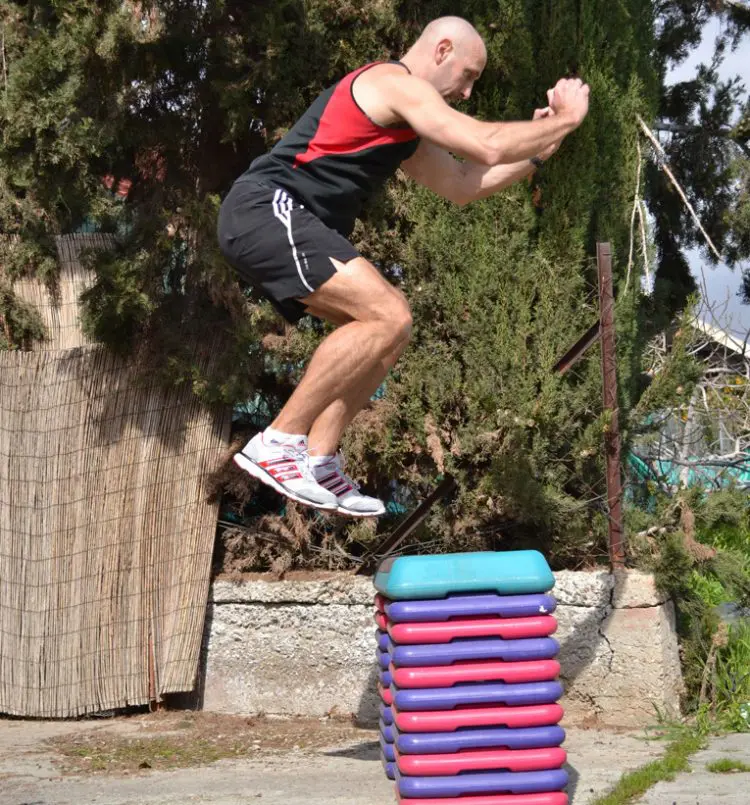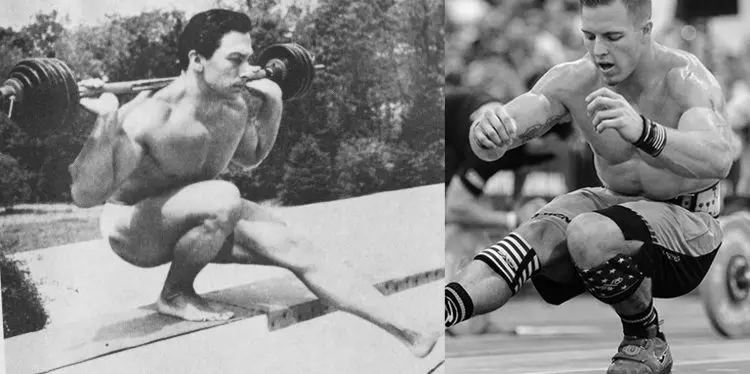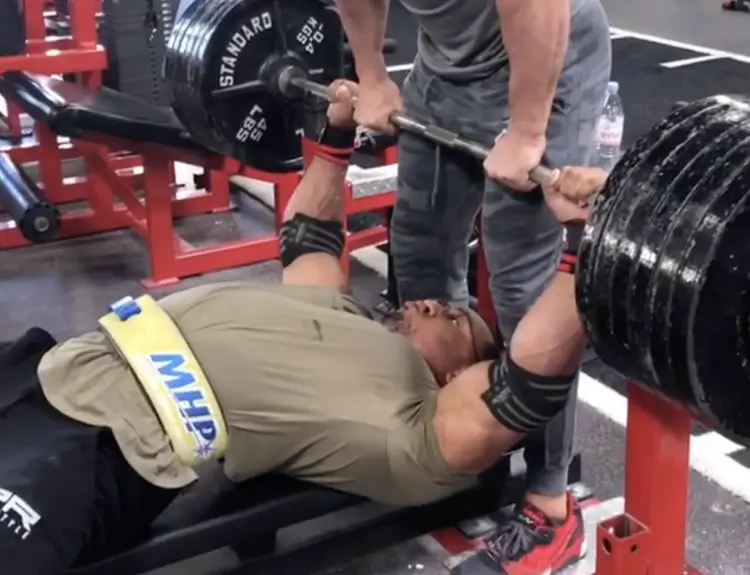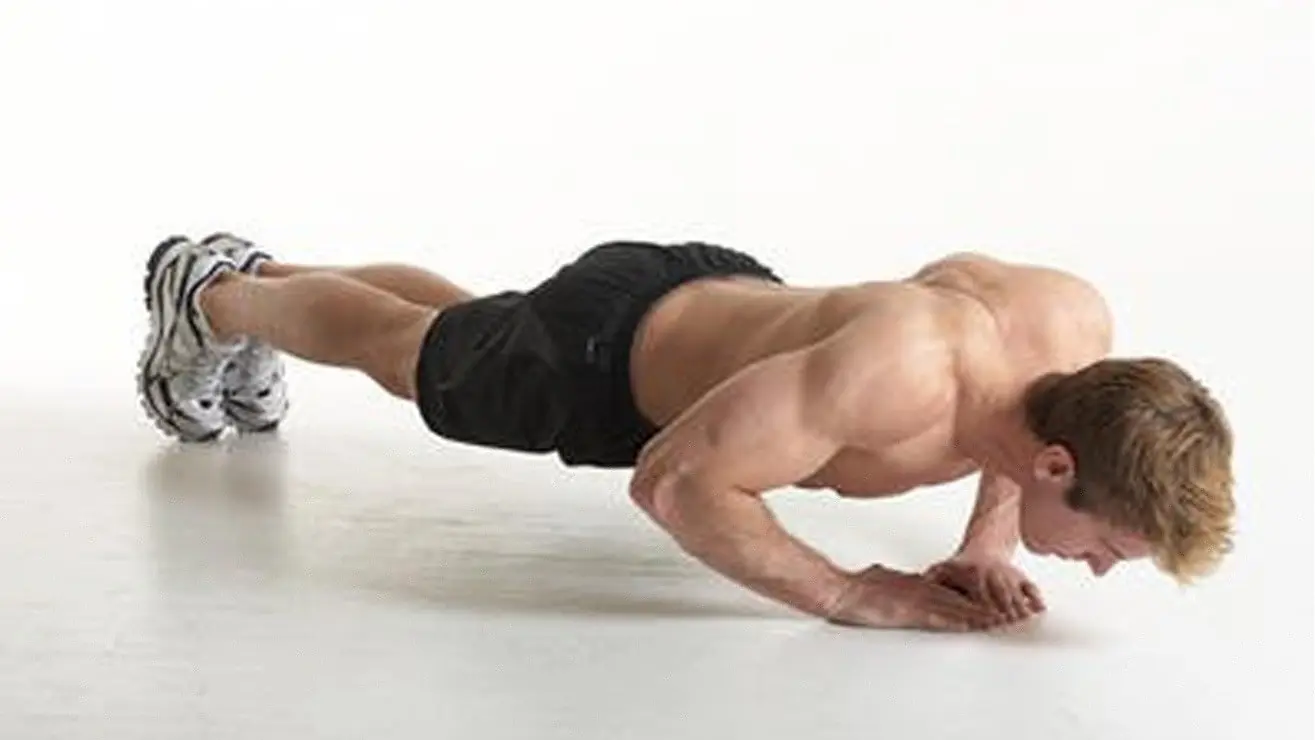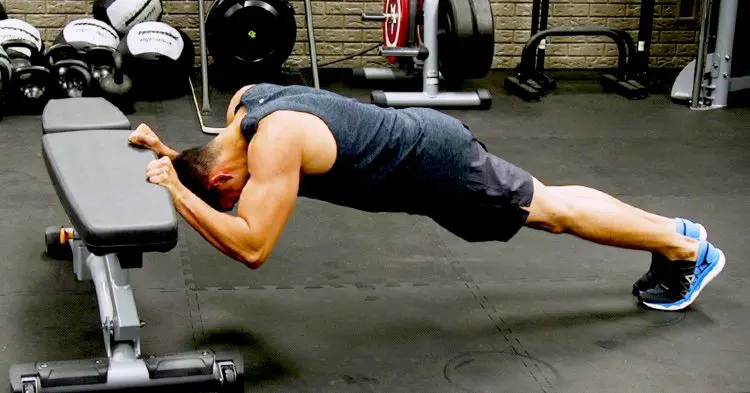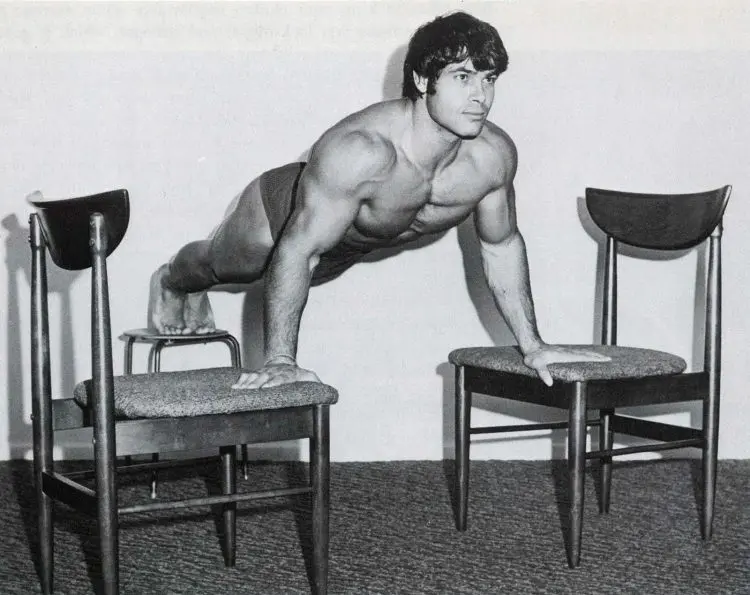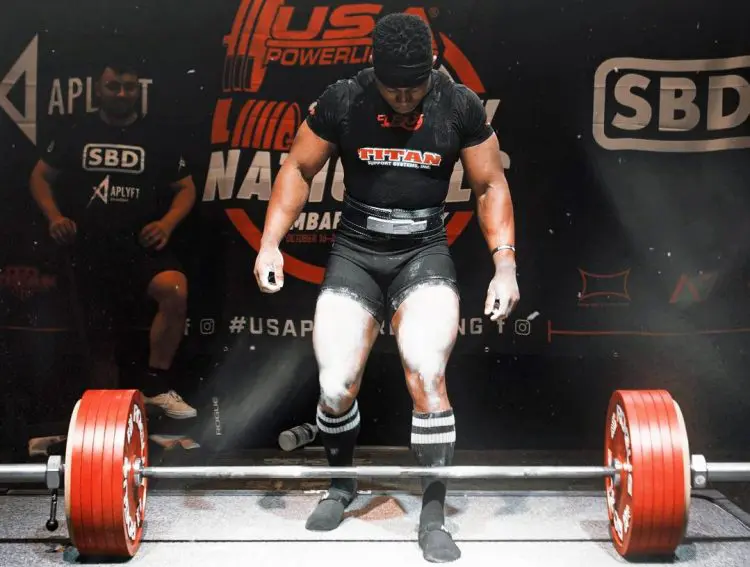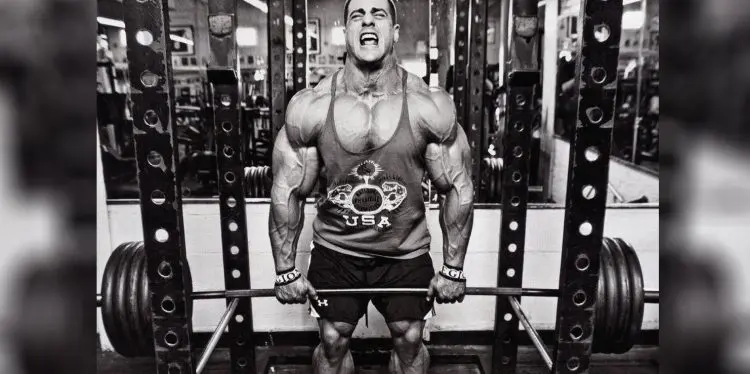For many, powerlifting is the ultimate strength sport. The rules are straightforward; it’s more accessible than competitive strongman and easier to learn than Olympic weightlifting. In fact, you can train for powerlifting in a regular commercial gym or even at home if you have reasonable home or garage gym equipment.
Powerlifters test their strength using three exercises that almost every gym-goer should already be familiar with: the barbell back squat, bench press, and deadlift. While most of their training revolves around these exercises, powerlifters also use accessory or assistance exercises to supplement their workouts.
Accessory exercises are chosen and used to increase the performance of the main lifts, correct muscle imbalances, prevent injuries and build muscle mass. Accessory movements can be variations of one of the main lifts, e.g., close-grip bench press, or something entirely different but equally useful, e.g., skull crushers, to increase triceps strength.
When it comes to choosing accessory exercises, most lifters naturally choose free weight, cable, and machine exercises. However, bodyweight exercises can also be effective.
As a personal trainer with over 35 years of experience, I reveal the nine best bodyweight powerlifting accessory exercises to help skyrocket your gains!
Level Up Your Fitness: Join our 💪 strong community in Fitness Volt Newsletter. Get daily inspiration, expert-backed workouts, nutrition tips, the latest in strength sports, and the support you need to reach your goals. Subscribe for free! Recent Updates: On July 15, 2024, Fitness Volt’s Senior Editor Vidur Saini (American Council on Exercise-CPT) updated the article and added actionable expert tips throughout the piece to improve the reader experience.
9 Best Bodyweight Exercises for Powerlifting
Use the following bodyweight assistance exercises after your main lift or on a separate training day:
- Bulgarian Split Squats
- Box Jumps
- Pistol Squats
- Diamond Push-Ups
- Bodyweight Skull Crushers
- Atlas Push-Ups
- Broad Jumps
- Single-Leg Romanian Deadlift
- Single-Leg Hip Thrusts
Bodyweight Squat Assistance Exercises
Squats are the first exercise in powerlifting competitions. For your squat to count, you must descend until the hip crease is below the knee crease.
Powerlifting squats require mobility and strength. Use these exercises to improve all aspects of your squat.
1. Bulgarian Split Squats
| Sets & Reps | 3 x 8-12 per leg |
| Equipment Needed | Bench or elevated platform |
| Target Muscles | Quadriceps, Glutes, Hamstrings |
Powerlifting squats are a bilateral or two-limbed exercise. As such, it’s entirely possible that you have one leg stronger than the other and don’t even realize it. This could reduce your squat strength and even lead to injury. Bulgarian split squats work one leg at a time, making them useful for identifying and fixing left-to-right leg strength imbalances.
Bulgarian split squats are also good for increasing hip mobility, which could make hitting the correct squat depth easier. They also test and develop your balance, which should also improve your squatting performance.
Saini advises using tempo reps (slow eccentrics and a pause at the bottom) to maximize target muscle stimulation and growth.
Pro Tip: To maximize glute activation during Bulgarian split squats, actively drive your front heel into the ground and squeeze your glute at the top of each repetition. This deliberate contraction will enhance muscle engagement and hypertrophy.
| Difficulty | Intermediate |
| Progression | Increase the range of motion, add weight (dumbbell, kettlebell, or backpack) |
| Regression | Conventional split squat |
Check out our in-depth guide to learn how to do bulgarian split squats exercise correctly.
2. Box Jumps
| Sets & Reps | 3 x 6-8 |
| Equipment Needed | Plyometric box |
| Target Muscles | Quadriceps, Glutes, Calves, Hamstrings |
Squats are usually done quite slowly. That’s because it’s all-but-impossible to get a heavy weight moving quickly. However, that’s precisely what you should try to do if you want to lift serious weights and blast through your sticking points.
Box jumps teach you how to explode out of the hole and drive the weight up to complete your squat rep. They are a form of plyometric training but, unlike a lot of plyo exercises, they are relatively low impact and easy on your joints.
To do box jumps, you just need a suitable platform to leap up on to. This can be a dedicated plyo box, an exercise bench, an aerobic step, a park bench, or even the bottom 2-3 steps of a flight of stairs.
“Box jumps are not just for explosive power; they also build muscle and strength in the quads, glutes, and hamstrings, making them a valuable addition to a powerlifting program,” says Saini.
Pro Tip: Focus on a soft landing by absorbing the impact with your hips and knees. This minimizes stress on the joints and allows you to maintain a smooth, controlled transition between reps.
| Difficulty | Beginner |
| Progression | Increase the range of motion by placing your hands closer together, elevate your feet, or use a decline surface |
| Regression | Perform close-grip bench presses on a bench or chair |
Learn more about this powerful exercise in this detailed article.
3. Pistol Squats
| Sets & Reps | 3 x 5-8 per leg (or as many as possible with good form) |
| Equipment Needed | None |
| Target Muscles | Quadriceps, Glutes, Hamstrings, Core |
If bodyweight powerlifting accessory exercises have a disadvantage, it is that you are limited to how much weight you can use. Because of this, bodyweight exercises aren’t always the best way to build strength.
Pistol squats are a unilateral or single-limbed exercise, making them much more demanding and suitable for building strength. They’re also useful for improving your balance and flexibility. This exercise is NOT easy, but that’s why it deserves to be part of your powerlifting training.
Per Saini, pistol squats are the ultimate test of single-leg strength and balance. Mastering this exercise can significantly improve stability and control in other lower-body lifts.
Pro Tip: During pistol squats, resist the urge to round your back as you descend. Instead, maintain a strong, neutral spine and engage your core throughout the movement to ensure optimal balance and stability.
| Difficulty | Advanced |
| Progression | Perform with a weighted vest or hold a weight in front of you |
| Regression | Use a TRX or partner for assistance |
Read our in-depth guide to pistols to learn how to do this effective squat-boosting move.
Bodyweight Bench Press Assistance Exercises
The bench press is one of the most well-known strength training exercises and is the second lift contested in powerlifting meets.
For your bench press to be legal, the bar must touch your chest, and you can only press it back up after a brief pause and when told to do so by the head judge. Use these exercises to improve your bench press performance.
1. Diamond Push-Ups
| Sets & Reps | 3 x Failure (or as many as possible with good form) |
| Equipment Needed | None |
| Target Muscles | Triceps, Anterior Deltoids, Chest |
For most lifters, the triceps is the weak link that limits bench press performance. After all, compared to the pecs, the triceps are a much smaller muscle, so it makes sense that they’re usually weaker.
In the gym, you can work on your triceps strength with barbell or dumbbell skull crushers, triceps pushdowns, or close-grip bench presses. However, there are other exercises you can use, including diamond push-ups.
This exercise involves doing push-ups with your hands together. This significantly increases triceps activation, which should lead to a bigger, better bench press.
Saini explains that if the diamond push-ups feel too uncomfortable on the wrists, you can switch to the close-grip setup.
Pro Tip: Incorporate a slow eccentric (lowering) phase into your diamond push-ups for a greater challenge. This will increase time under tension and maximize muscle fiber recruitment.
| Difficulty | Intermediate |
| Progression | Elevate your feet, add weight (weighted vest or backpack), or perform archer push-ups (shifting weight to one side). |
| Regression | Perform standard push-ups or incline push-ups. |
Here’s how to do this challenging but straightforward triceps builder.
2. Bodyweight Skull Crushers
| Sets & Reps | 3 x 10-15 |
| Equipment Needed | Elevated surface (bench, chair) |
| Target Muscles | Triceps |
Barbell skull crushers are a very popular and effective triceps exercise. They can also be done using an EZ bar, dumbbells, or even a cable machine. But just because you’re training with bodyweight exercises doesn’t mean you can’t enjoy the benefits of this exercise, too.
Bodyweight skull crushers are far from easy, but that’s what makes them such an effective strengthening exercise. If your lockout is your bench press weak link, this is the exercise for you.
Be warned, this triceps builder is hard on your elbows and could lead to elbow joint pain. The good news is that there are several ways to do this exercise so you can adapt it according to match your current level of triceps strength.
Pro Tip: To avoid excessive strain on the elbows, ensure your elbows track inward throughout the movement. This will help to isolate the triceps and minimize the risk of injury. Level Up Your Fitness: Join our 💪 strong community in Fitness Volt Newsletter. Get daily inspiration, expert-backed workouts, nutrition tips, the latest in strength sports, and the support you need to reach your goals. Subscribe for free!
| Difficulty | Beginner |
| Progression | Increase the range of motion by placing your hands closer together, elevate your feet, or use a decline surface. |
| Regression | Perform close-grip bench presses on a bench or chair. |
Check out this in-depth guide to learn how to do this bodyweight bench press booster.
3. Atlas Push-Ups
| Sets & Reps | 3 x Failure (or as many as possible with good form) |
| Equipment Needed | Two elevated surfaces |
| Target Muscles | Upper Chest, Shoulders, Triceps |
All types of push-ups are good for boosting bench press performance. After all, they use the same muscles and a very similar movement pattern. One lesser-known but extremely effective push-up variation is the Atlas push-up.
This variant allows you to work through a bigger-than-normal range of motion, which increases pec activation. Including this exercise in your workouts will increase your strength and speed off your chest, where many bench presses stall. Make it even more effective by adding a 2-5 second pause at the bottom of each rep.
Saini adds that the Atlas push-ups are a demanding exercise that targets the upper chest and shoulders, helping to build the strength necessary for heavy bench presses and overhead presses.
How to do it:
- Place three chairs in a T-shape. Put your hands on two of them, and your feet on the third. Your body should be straight, and your hands a little more than shoulder-width apart. Pull your shoulders down and back and brace your core and legs.
- Bend your arms and lower your chest down toward the floor. Descend as far as you can to get a good stretch in your chest and shoulders.
- Forcefully extend your arms and push yourself back up. Reset your core and repeat.
Pro Tip: Engage your lats and core to maintain a stable, hollow-body position during Atlas push-ups. This will help to distribute the load evenly and protect your shoulders from unnecessary stress.
| Difficulty | Advanced |
| Progression | Elevate your feet, add weight (weighted vest or backpack) |
| Regression | Conventional push-ups |
Bodyweight Deadlift Assistance Exercises
The final discipline in powerlifting is the deadlift. Competitors can use a conventional or sumo stance as preferred. Deadlifts are a full-body exercise that emphasizes the posterior chain, which is the collective term for all the muscles on the back of your body. It also requires an iron grip.
Exercises such as rack pulls, paused deadlifts, and deadlifts with bands or chains are all effective accessory exercises, but you can also use bodyweight movements to improve your deadlift performance.
1. Broad Jumps
| Sets & Reps | 3 x 5-8 |
| Equipment Needed | None |
| Target Muscles | Quadriceps, Glutes, Calves, Hamstrings |
A strong deadlift starts with an explosive pull from the floor. The weight won’t move quickly, but that should be your intent. Lifting explosively increases fast-twitch muscle fiber recruitment, which will help you generate more force and lift heavier weights. Being more explosive will also help you blast through your sticking points, typically as the bar nears your knees.
Broad jumps are a plyometric exercise that will increase explosive strength and power. On the downside, this move involves a heavy landing, so it can be hard on your knees. If possible, perform board jumps on soft matting, into a sandpit, or landing on a gymnastics crash mat.
Saini explains that broad jumps train explosive power in the lower body, translating to faster bar speed and increased force production in squats and deadlifts.
How to do it:
- Stand with your feet between shoulder and hip-width apart. Raise your arms above your head.
- Swing your arms down and behind you while simultaneously pushing your hips back and bending your knees. This is your “wind up.”
- Swing your arms forward and jump as far as you can. Try to jump both high and long.
- Land on bent legs to absorb the shock.
- Reset your position and repeat.
Pro Tip: Emphasize the arm swing during broad jumps to generate additional momentum and power. A coordinated arm swing can significantly increase your jumping distance.
| Difficulty | Beginner to Intermediate |
| Progression | Weighted broad jumps, or increase the distance of the jumps |
| Regression | Perform standing long jumps or practice jumping without focusing on distance |
2. Single-Leg Romanian Deadlift
| Sets & Reps | 3 x 8-12 per leg |
| Equipment Needed | None |
| Target Muscles | Glutes, Hamstrings, Core |
The deadlift involves a hip hinge, which involves the glutes and hamstrings. Powerlifters train this movement with exercises like Romanian deadlifts and good mornings, which are traditionally done using free weights. However, you can work on your hip hinge strength using just your bodyweight and single-leg Romanian deadlifts.
Saini prescribes this exercise as it is incredibly effective for improving hip hinge mechanics, strengthening the posterior chain, and enhancing balance and stability.
This exercise is also useful for identifying and fixing left-to-right strength imbalances and improving balance, mobility, and coordination.
How to do it:
- Stand with your feet together, hands by your sides. Shift your weight over and onto one foot. Bend your supporting knee slightly for balance.
- Lean forward from your hips and reach down toward the floor. Descend as far as you can without rounding your lower back. Extend your other leg out behind you for balance.
- Stand back up and repeat. Do the same number of reps on each leg.
Pro Tip: Focus on maintaining a neutral spine and keeping your hips level throughout the movemen to target the hamstrings and glutes effectively while minimizing stress on the lower back.
| Difficulty | Intermediate |
| Progression | Add weight (dumbbell, kettlebell, or backpack) or perform on an unstable surface (balance board or Bosu ball) |
| Regression | Standard RDLs |
3. Single-Leg Hip Thrusts
| Sets & Reps | 3 x 10-15 per leg |
| Equipment Needed | Bench (optional) |
| Target Muscles | Glutes, Hamstrings |
The glutes are a critical muscle for successful powerlifting. They play a significant role in the squat and deadlift, and even the bench press.
The hip thrust exercise is a good bodyweight move for working the glutes but, done one leg at a time, it is even more beneficial, and you can use it to build strength.
“Single-leg hip thrusts isolate and strengthen the glutes unilaterally, which can help to correct imbalances and boost performance in squats and deadlifts,” adds Saini.
How to do it:
- Sit on the floor with your legs bent and feet flat. Rest your back against a bench.
- Drive one foot into the floor and thrust your hips upward until your working knee, hip, and shoulders form a straight line. Do not hyperextend your spine.
- Lower your hips back down and either repeat on the same side or swap legs and alternate as preferred.
- If using one leg proves too challenging, you can also do this exercise with both legs at the same time.
Pro Tip: Drive through your heel and squeeze your glute at the top of each repetition. This deliberate contraction will maximize muscle activation and enhance glute development.
| Difficulty | Intermediate |
| Progression | Add weight (barbell, dumbbell, or resistance band) or elevate your foot on a bench or stability ball |
| Regression | Conventional hip thrusts |
Programming Bodyweight Exercises for Powerlifting
Follow these guidelines to ensure you can get the most from these exercises:
Reps and sets
Because you’ll be lifting your body weight, and that weight is fixed, your main training variable is volume. Whatever exercise you are doing, train to within a rep or two of failure. Do 2-4 sets of your chosen exercises, resting 60-90 seconds between each one.
Tempo
Except for the jumps, you should use a deliberate, controlled tempo for all of these exercises. For example, descend in four seconds and lift in two. This will keep your muscles under constant tension, which should produce better results.
Frequency
To get the best results from these exercises, you should do them 1-2 times per week. Allow 2-3 days between similar exercises for recovery. E.g., do deadlifts and deadlift bodyweight accessories on Monday, and squats and squat accessory exercises on Thursday.
Progression
Try to do 1-2 more reps each time you do these exercises. Alternatively, reduce your rest periods by 5-10 seconds between sets. You can also increase your time under tension by adopting a slower tempo. With some exercises, you may also be able to make them more challenging by changing the position of your body, such as elevating your feet during diamond push-ups. However you do it, try and make your workouts gradually more demanding.
Programming options
There are several ways you can incorporate these exercises into your strength training workouts:
After your main lift:
This option is probably the most usual. Simply follow your main lift with the accessory exercises that are linked to the performance of the main exercise. For example:
- Bench press
- Diamond push-ups
- Bodyweight skull crushers
After a different main lift:
With this method you do your accessory exercises after a different main lift, such as squat assistance after bench press, or bench press assistance after squats. Or, as in this example, squat assistance after deadlifts.
On a separate day:
Using this method, you do all accessory training in one workout. For example:
- Monday – squats
- Tuesday – bench press
- Thursday – deadlifts
- Saturday – accessory exercises (2-3 exercises for each main lift)
All of these options can work, so try each one to see which one is best for you.
Why Use Bodyweight Assistance Exercises?
While there is nothing wrong with free weight, cable, and machine accessory exercises, bodyweight exercises offer some unique benefits. That doesn’t mean you should ONLY use bodyweight exercises to boost your performance of the big lifts, but in some circumstances, they may be the better choice.
Convenience
You can do bodyweight exercises anywhere and anytime. The same cannot be said for a lot of other powerlifting accessory exercises. Because of this, you can do your assistance training at home instead of making an extra trip to the gym.
No extra equipment required
Things like glute-ham raises, board presses, box squats, and rack pulls all require extra training equipment. You don’t need any additional training equipment to do most bodyweight assistance exercises, making them ideal if you train in a basic gym without much specialist equipment available.
Easy on your joints
After lots of heavy squats, bench presses, and deadlifts, your joints may be feeling banged up. The idea of doing more heavy training will probably be off-putting. Bodyweight accessory exercises generally involve lower weights and higher reps, making them more joint-friendly.
Variety
There is only so much barbell training you can do before it becomes boring. Powerlifters train using a steady diet of barbell squats, bench presses, and deadlifts, and more similar training may be unappealing. Bodyweight exercises are so different from barbell training that the variety will probably be very welcome and could help prevent boredom.
Increased athleticism and functional fitness
The big barbell lifts are integral to the sport of powerlifting. Still, if that’s all you ever do, you may find that you lack agility, mobility, and athleticism. Bodyweight exercises usually involve more balance, mobility, and coordination than standard squats, bench presses, and deadlifts. Bodyweight powerlifting accessory exercises can make you more athletic and agile, improving your physical performance outside of the gym and away from the lifting platform.
Wrapping Up
Powerlifting is a barbell sport. As such, most of your training should revolve around the competition lifts; squats, bench presses, and deadlifts. But that doesn’t mean you need to use the same tools for your accessory or assistance training.
In fact, doing something other than barbell training can be very beneficial, providing you with a physical and mental break from your usual barbell-based workouts. Bodyweight training can be just as effective as dumbbells, cable machines, and barbells and is often more convenient and joint-friendly.
Supplement your powerlifting workouts with these bodyweight assistance exercises to boost your performance of the big lifts.

